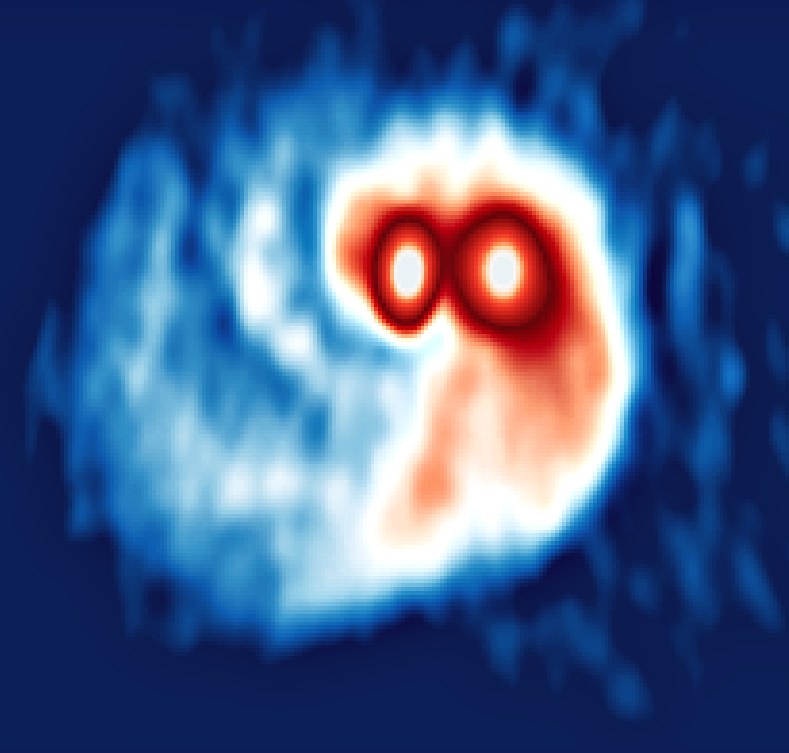Planets form around young stars, in protoplanetary disks, by slow aggregation of ice and dust particles. Usually, the modeling of these models is based on isolated stars like the Sun. However, most stars are in fact binary systems, i.e. two stars revolving around each other.
Around SVS 13, a very young binary star, astronomers have observed, in unprecedented detail, the primordial material that could in the future give rise to several planetary systems.
These observations reveal for the first time that each star in the system is surrounded by a rotating disk of gas and dust, in other words a future planetary system. Both are fed with primitive matter from an outer "circumbinary" disk, via large spiral arms (see image below).

This work to be published in The Astrophysical Journal is the result of a long accumulation of data obtained over the last thirty years with different radio telescopes.
"Our previous observations of this system, with the IRAM interferometer at Plateau de Bure, had revealed a high richness of complex molecules (see Lefèvre et al. 2017) URL link with DOI, below. Thanks to new data obtained by the ALMA radio interferometer, we were able to double the number of molecules detected and to locate them precisely : in the disk of the most buried companion ," says Sylvie Cabrit, astronomer at Paris Observatory - PSL and co-author of the paper.
Nearly thirty different molecules have been identified around the two protostars, including thirteen complex organic molecules, precursors of life (seven of them have been detected for the first time in this system).
"This is the first time such chemical differentiation has been seen in such a close binary system. It is one more step towards understanding the diversity of observed planetary systems," adds Sylvie Cabrit.
This new study, probably the most complete to date of a binary star system in formation, sheds light not only on the nature of the two protostars and their environment, but also on their dynamics and the way they behave in relation to each other. It provides crucial parameters for future numerical simulations to test the early stages of binary star formation.

REFERENCES
A. K. Díaz-Rodríguez et al. "The Physical Properties of the SVS 13 Protobinary System : Two Circumstellar Disks and a Spiraling Circumbinary Disk in the Making". https://arxiv.org/pdf/2111.11787.pdf Accepted for publication in The Astrophysical Journal.
Previous study with the IRAM interferometer at Plateau de Bure :
C. Lefèvre, S. Cabrit, et al. : “CALYPSO view of SVS 13A with PdBI : Multiple jet sources” Astronomy & Astrophysics 604, L1 (2017)
DOI : 10.1051/0004-6361/201730766
